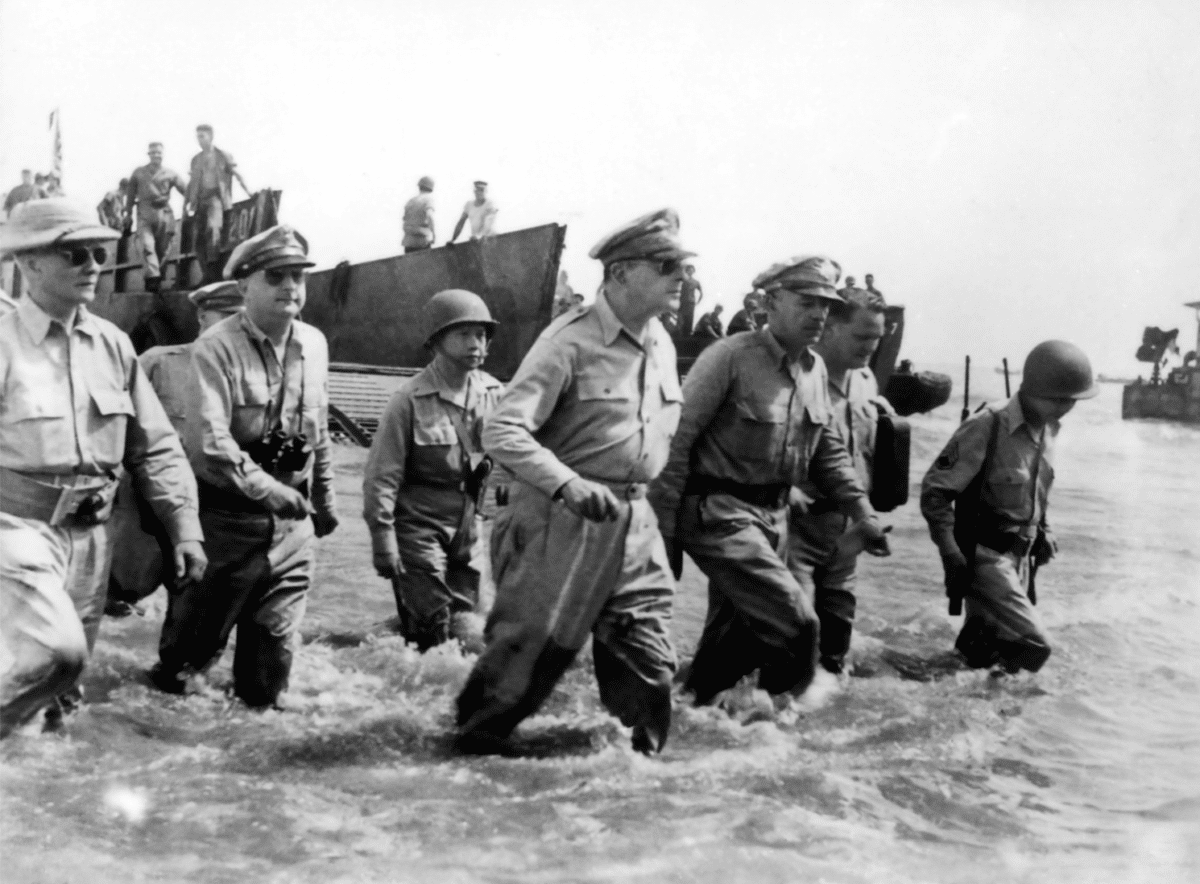September 9, 1878: The birth of President Sergio Osmeña

The iconic image of General Douglas MacArthur wading ashore with Philippine President Sergio Osmeña at Leyte’s Red Beach. Image: Wikipedia
President Sergio Osmeña was born on Sept. 9, 1878, in Cebu City. His family was wealthy and prominent in the Visayan Islands.
Sergio received a primary and secondary education close to home. He eventually decided on a career in law which required him to leave Cebu City. He received his legal education at the University of Santo Tomas in Manila.
During the Philippine-American War, the talented young lawyer served as a staff officer at President Emilio Aguinaldo’s headquarters. Following the American victory in the war, Sergio took advantage of the numerous opportunities in government and politics for a highly educated, young, and ambitious Filipino. Over the next 45 years, Sergio excelled in American colonial and commonwealth government and politics.
Osmeña’s first political position was governor of Cebu. He only served two years in the office, 1906 to 1907, before a greater opportunity arose. In 1907, he was able to obtain the prestigious position of Speaker of the House of Representatives in Manila. The Americans were granting more and more legislative and judicial autonomy to Filipinos.
On August 19, 1916, the Jones Law was passed by the United States Congress and signed by President Woodrow Wilson. The law provided a pathway for eventual Filipino independence. The new law benefitted Sergio. He was able to retain his Speakership of the House. He eventually served in the Senate.
Independence for the Philippines proved to be slow during the 1920s. Finally, the Tydings-McDuffie Act, which granted a definitive timetable for independence, was approved by the US Congress and signed by President Franklin Roosevelt in 1935.
The Filipinos drafted a constitution for the Philippine Commonwealth and elected a president and vice president. The inauguration of President Manuel Quezon and Vice President Sergio Osmeña was held on Nov. 15, 1935.
During the Japanese invasion and occupation of the Philippines from 1941 to 1945, Quezon and Osmeña were in exile. They had escaped from Corregidor and established a Philippine government in exile located in Washington DC.
While in the United States, President Quezon continued to suffer from tuberculosis. He died at a treatment center in Upstate New York on August 1, 1944. Sergio Osmeña was sworn in as President of the Commonwealth by a United States Supreme Court justice shortly after Quezon’s death.
When the invading American forces landed on Leyte Island on October 20, 1944, President Osmeña was with General Douglas MacArthur as they waded ashore. Osmeña reestablished the Philippine Commonwealth government at a temporary site in Tacloban. Eventually, the Philippine government was reestablished in Manila on Feb. 27, 1945.
On April 5, 1945, President Osmeña was invited by President Roosevelt to Warm Springs, Georgia, at the “Little White House.” Roosevelt wanted a briefing on the situation in the Philippines.
Following the meeting, the two executives held a press conference. Roosevelt had conducted 998 press conferences during his long time in office. Since he died at Warm Springs on April 12, 1945, only seven days after his meeting with Osmeña, the press conference on the Philippines was Roosevelt’s last.
Following the conclusion of World War II, President Osmeña was very focused on Philippine recovery and redevelopment. Most likely, he neglected the aggressive post-war Philippine politics. He was defeated by Manuel Roxas in the last election of the Philippine Commonwealth on April 23, 1946. He died on October 19, 1961, at age 83.
Dennis Edward Flake is the author of three books on Philippine-American history. He is a Public Historian and a former park ranger in interpretation for the National Park Service at the Eisenhower National Historic Site in Gettysburg, PA. He can be contacted at: flakedennis@gmail.com

